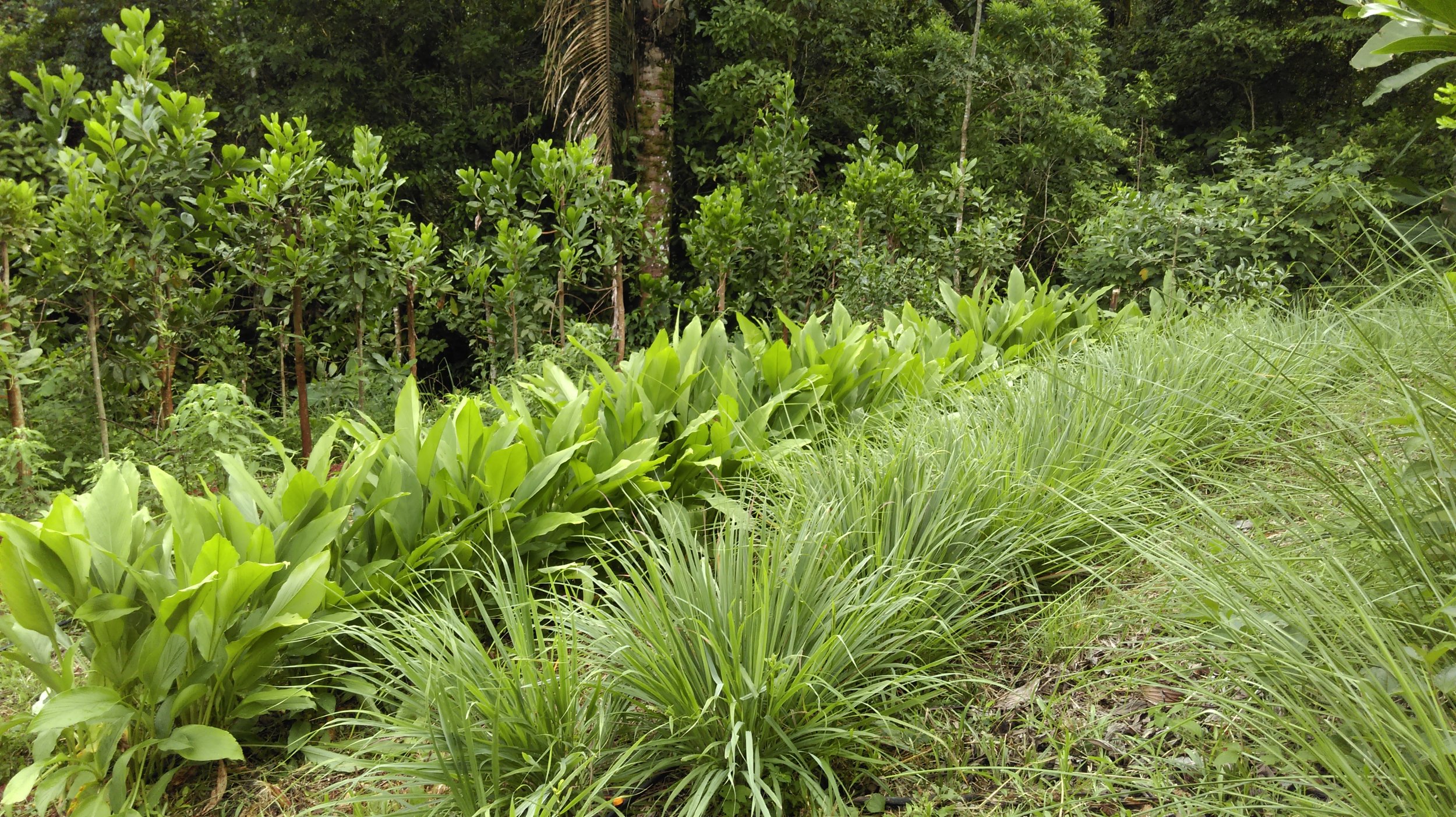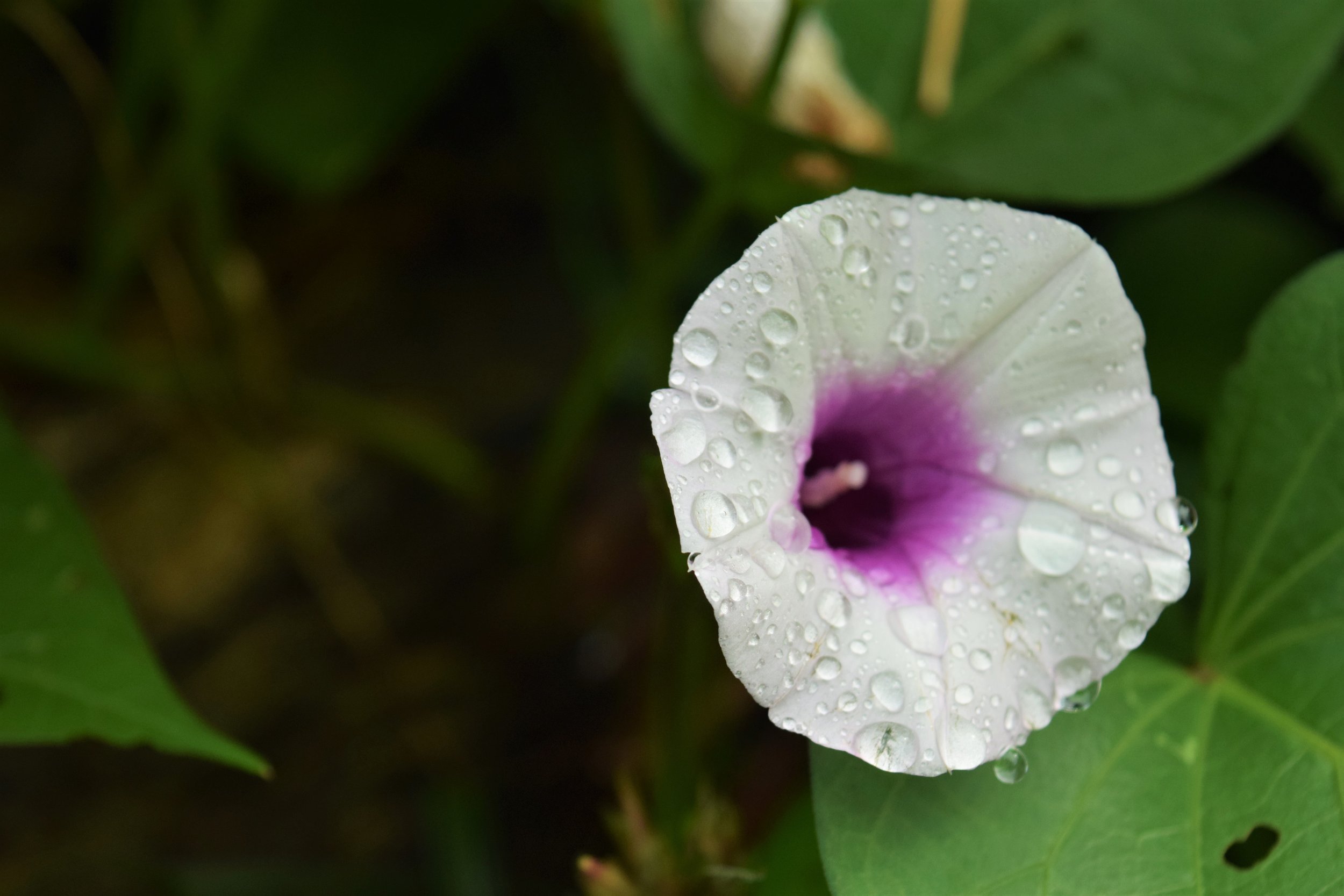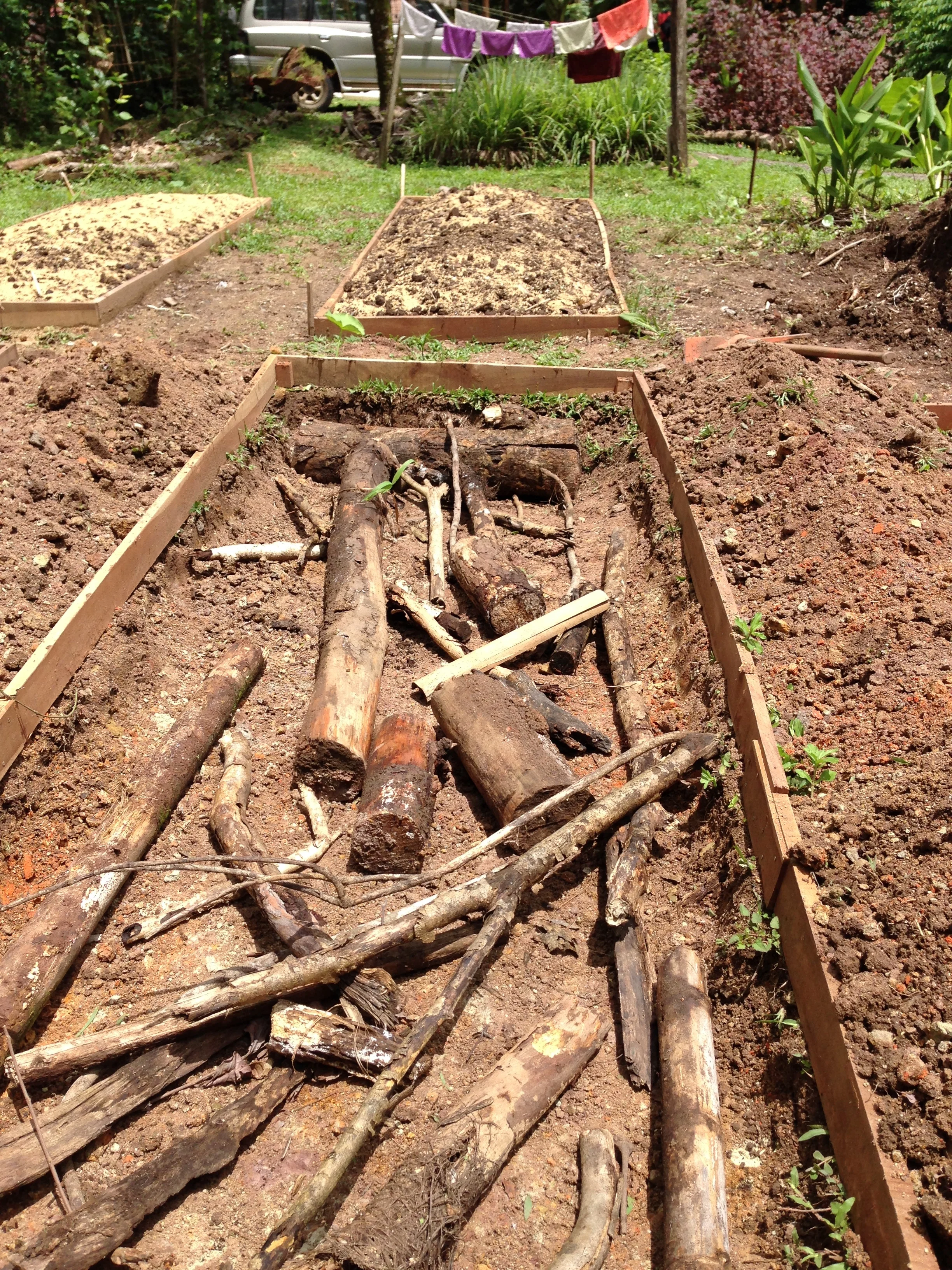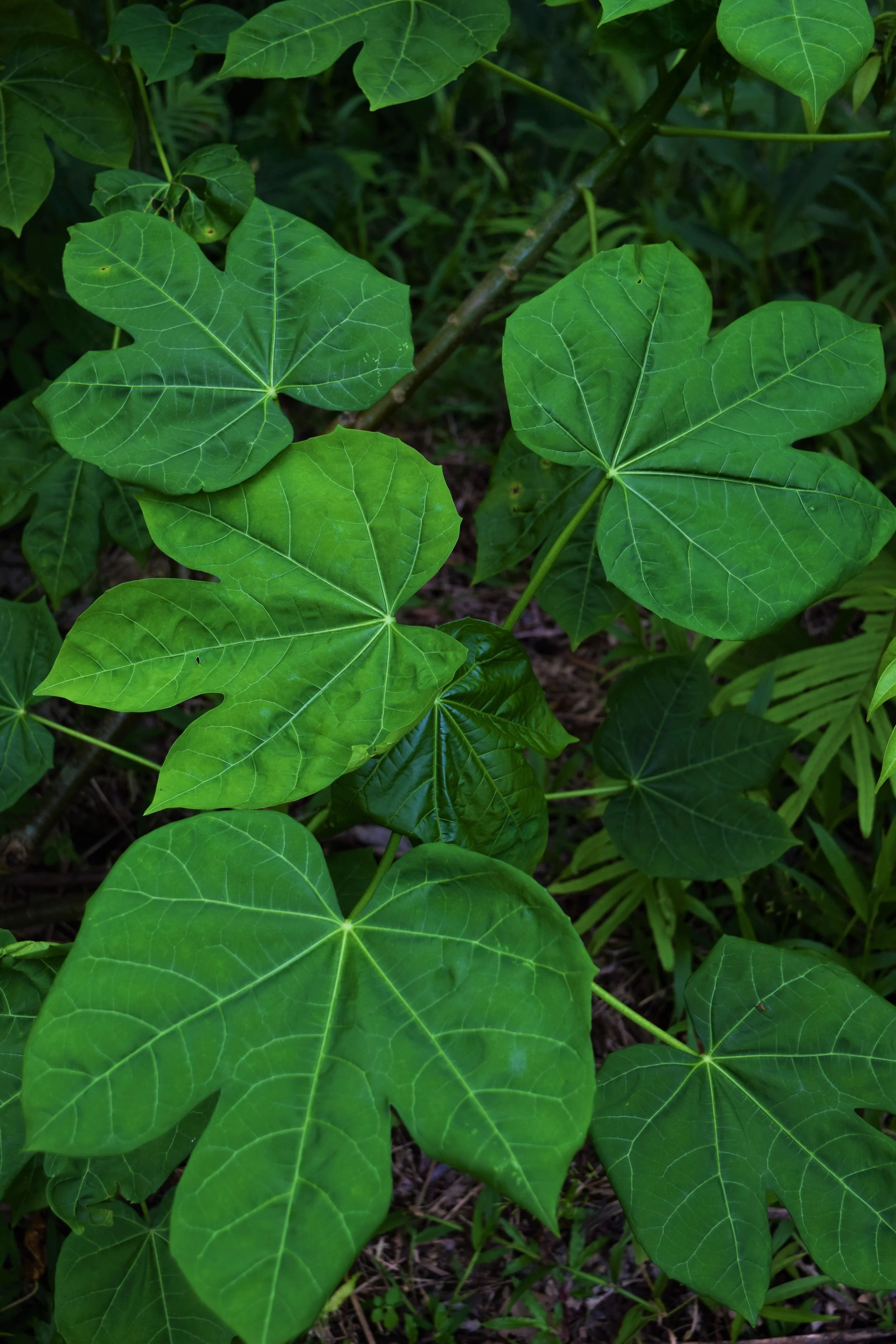Syntropic agriculture is based on seeing evolutionary processes as driven by cooperation among members of the living system in a way that benefits the system as a whole. It aims to maximize of diversity and productivity.
Fermented Plant Juice (FPJ) and Its Application
Salak: A Productive Understory Crop
Amending Calcium-Deficient Soils – A Tropical Permaculturist’s Approach
Amending Calcium-Deficient Soils – A Tropical Permaculturist’s Approach
By 2022 apprentice Connor Gilmartin
A walk through our orchard systems
Wade Davis once wrote that the Kogi people of Columbia believe “The surface of the Earth itself is an immense loom upon which the sun weaves the fabric of existence”. The garden and orchards of Rancho Mastatal are proof of this eloquent observation. While walking through the orchard spaces of the Ranch, your field of vision is overtaken by a mosaic of emerald green foliage, and gem-like, plump tropical fruits. This intentionally designed agroforest is abundant - however, a productive tropical orchard or garden does not come without hard work. Without mindful intervention, these orchards and gardens would not reach their fullest potential. It is our goal to listen to Madre Tierra, and help her achieve her most resilient, healthiest form.
Tropical Soils
While the jungle soils of Mastatal are abundant in in biodiversity, they are lacking in potential hydrogen (pH), which results in acidic soil. This low-pH, high acidity soil presents a bit of a problem for a gardener like myself, who is keen on optimizing a plant’s growing medium, in search of nutrient-dense, boast-worthy fruits and vegetables. Simply put, acidic soil results in low levels of available calcium. It is a known fact that calcium plays a crucial role in plant health and development. So… how can we remedy this issue? I’m glad you wondered.
A tropical permaculturist in this predicament is faced with two options; purchase bulk calcium carbonate in the form of ground limestone to apply as a top dress, OR use all those eggshells sitting on the top of the compost bucket to make Water-Soluble Calcium (WCA). WCA is one of the five inputs developed by Master Han Kyu Cho, the prolific South Korean gardener responsible for what is known globally as Korean Natural Farming (KNF). I’ll note that topdressing with limestone (CaCO3) does play a role in our agroforested zones - foliar feeding 12 acres of orchards would be unrealistic, to say the least. Foliar feeding a quarter acre of raised garden beds is a different story. Preparing WCA is fulfilling and presents a phenomenal opportunity to help close the loop between your garden and kitchen, while also providing your plants a calcium-rich tonic they’ll thank you for. When you see your pepper’s shiny leaves praying towards the morning sun, you’ll see what I mean.
How to Make Water-Soluble Calcium
I’ll begin by listing the materials you’ll need to make a batch of Water-Soluble Calcium (WCA). They are as follows;
1.) Two clean glass jars (I am personally Ball Brand loyal, but any clean glass jars will do)
2.) Eggshells (Rinsed after cracking to remove organic matter)
3.) Brown Rice Vinegar (3% acetic acid is what you’re shooting for if you make your own vinegar like we do here at the Ranch)
4.) A cast iron skillet
5.) A breathable cloth to act as a “lid” (cheesecloth or nut milk bags work quite well)
Washed egg shells and homemade bottles of vinegar
One of our alternative wood fired cooking stoves
I chose not to list specific quantities of eggshells and vinegar because the amount of WCA you might want or need is variable, depending on the size of your garden space or application schedule. By weight, the solution will be prepared using a ratio of 1:10 (eggshells to brown rice vinegar).
To prepare the WCA solution:
1.) Collect eggshells, gently wash with water after cracking.
2.) Lightly roast the cleaned, dried eggshells in a cast iron skillet for approximately 30-45 minutes. This removes any potential leftover organic matter stuck to the shell. Shells should be dry and toasted golden but not charred.
3.) Add toasted shells to a glass jar filled with brown rice vinegar. You will see carbon dioxide being released as the eggshells float up and down the vinegar. This is good. This is a sign the calcium is being dissolved into the solution.
4.) Cover your jar with a breathable cloth. This prevents pests or large organic matter from entering your prized water-soluble calcium solution.
5.) Place jar in a cool, dry location for 7 to 10 days.
6.) After this time has passed, check to see if the solution is still bubbling. If it’s not, that means your solution is saturated and all set for the final step.
7.) Strain your solution into a clean glass jar to remove eggshells. Cover with airtight lid, label, and store at room temperature out of direct sunlight.
Toasted egg shells
Egg shells sitting in vinegar
Voila! A week has passed and now you have a jar of homemade water-soluble calcium. You must be excited to go give your plants a taste. I’d recommend doing so in the early morning. Greet the sun, sing to your plants, and remember, your mind is a garden, your thoughts are the seeds, you can grow flowers, or you can grow weeds. Happy gardening!
Want to learn More?
We have been applying permaculture principles to our agriculture systems for the past two decades. Join us for our yearly Permaculture Design Certification to learn more about designing and implementing sustainable tropical systems.
Check out these past blogs on Tropical Agriculture
Tips for Working with Tropical Soils
Using Mountain Microorganism to Create Organic Fertilizer
Nitrogen Fixing Plants at Rancho Mastatal
Natural Log Cultivation of Shiitake Mushrooms in the Tropics
Even though growing shiitake in bags of synthetic logs is more common due to labor and material costs for bigger scale production, we decided to go for the traditional natural log cultivation, as it has been grown for thousands of years. So if you’re thinking about starting mushroom cultivation, here are a few tips on how to do it:
10 Things You Didn't Know About the Banana
Improving Soils in the Humid Tropics of Costa Rica
Hugulkultur in the Tropics
Gardening and Permaculture practices at the Ranch
Here at the Ranch the year long apprentices have various roles and functions that support the Ranch community. By taking on responsibilities and managing certain areas we the chance to learn and experience those areas on a deeper level . Part of the educational model created by the ranch team is a monthly rotation of these so called life skills. Each apprentice transitions their life skill to the next apprentice, passing on all of the relevant information to their colleague in order to complete the various tasks associated with each life skill.
Vegetables & Greens that Thrive in the Tropical Rainy Season
When the rainy season arrived, it started with a sense of relief - dry season went on longer than expected and our trees and plants were scorching in the heat. For myself the cooler air was welcome comfort, and the rains a reminder of home and getting cozy. Mornings were beautiful with the sight of the sun rising through the dewy mist.
Salak Pollination
As apprentices at Rancho Mastatal, we take on a Plant Skill, where we each are responsible for a plant variety in our agroforestry system. When we began as apprentices many of us wanted to avoid the Salak palm, as it has splinter inducing spikes throughout the stem and leaves. Following my intention to dive into challenges this year, I decided to take being caretaker of the prickliest palm on the Ranch.
Using Mountain Microorganism to Create Organic Fertilizer
The need to cultivate a “living soil” that is full of microbes is something I hear frequently in the organic farming and permaculture world. As an apprentice at Rancho Mastatal this year, I have the unique opportunity to look further into the universe of these small and unseen allies. A way into this world was through the Ranch’s process of making organic fertilizer, one that harvests and inoculates the soil with Mountain Microorganisms (MM). This is similar to compost tea, where we create a fermented fertilizer with microorganisms such as manure.
Where to Buy Your Trees and Seeds in Costa Rica?
Ever have a challenging time finding your favorite plant in Costa Rica? Or wonder where to get supplies for a new greenhouse? What about organic pesticides? After nearly a decade working in country, our team has compiled a comprehensive list of nurseries, seed banks, botanical gardens, and farm/garden suppliers.
Salak Palm: A Guide for Tropical Permaculture
This article was originally published at the Porvenir Design blog.
Salak palm or snake fruit (Salacca edulis or Salacca zalacca) is a high value understory species for tropical agroforestry plantings. Salak palm is native to southeast Asia, where it is commercially cultivated in Indonesia, Malaysia, and Java, in their wet tropical lowland climates. At higher elevations the "Bali" variety can be grown. It produces a delicious fruit, eaten out of hand, with a taste similar to strawberry with an apple-like texture. The fruit transports well and can be stored at room temperature for a week with little degradation in quality.
8 Tips for Starting your Tropical Homestead
You’ve just purchased your dream property in tropical Costa Rica. You want to grow your own food. You are anxious to get to work now, have bought some plants from a nursery you randomly drove by, and have a shovel in hand, but...where to start?
Most of our clients fall on either side of a spectrum of project implementation. Either they experience paralysis by analysis, overthinking every step, their confidence slowly eroding, or they dive in head first without any planning. Either way they hire our team at Porvenir Design to bring them to the middle. How can we take our time and plan while simultaneously moving forward with the energy and confidence that is required to see a project to completion?
5 "Grow-Your-Own" Mulch Plants for the Tropics
This post was originally published by the ECHO Community newsletter and was reposted from the Porvenir Design blog.
The tropical forest is constantly self-mulching. After a walk in the woods I usually return with bits of leaves and twigs caught in my hair. Lying in bed at night, my partner and I often hear branches and even whole trees tumbling toward the great soil food web below.
Making Microbes: Fungal vs Bacterial Soil Life
Organic gardeners and farmers understand the need to cultivate and protect soil microorganism life. The strategies to do this involve mulching, composting, and avoiding soil disturbance as much as possible. We know that these strategies, in addition to many others, encourage a healthy soil-food-web.
How to Design, Plant, Maintain, and Feast from your Food Forest
When you visit the Ranch you will not find rows of squash, tomatoes and carrots as you might associate with a temperate climate organic farm. You won't find deep layers of topsoil. You won't find tractors and their associated implements. What you will find is an agriculture that blends pleasantly into the forest. To the untrained eye it may even be challenging to tell where the forest begins and the farm ends. This is because our agriculture is based on the ecology of the place we live. And we live in a tropical monsoon forest. Our agricultural practices, often cited as agroforestry or food forests in the permaculture jargon, mimic the forest around us.
Tips for Working with Tropical Soils
Soil, the ever fascinating topic to any garden guru or green thumb. Here at the Ranch it's all about topsoil, which is basically non-existent. The little soil that is present has a high clay content making it particularly susceptible to compaction. It is also highly acidic. The combination of the two means that without any additives it would be challenging to grow anything at all. So we've devised a number of methods to build up the topsoil, break up the clay and raise the pH throughout our orchard and garden spaces. These methods can be used anywhere in the world to improve your soil.


























